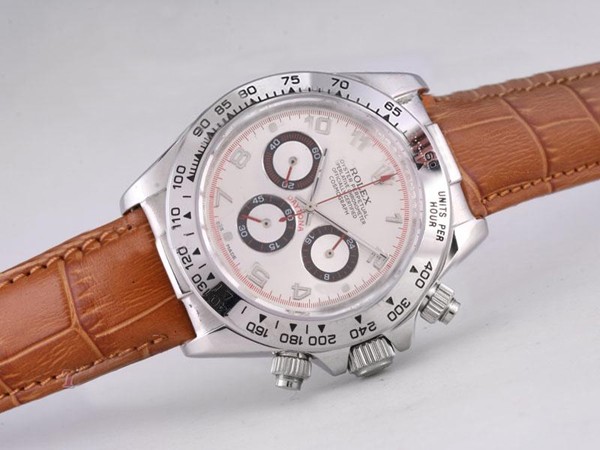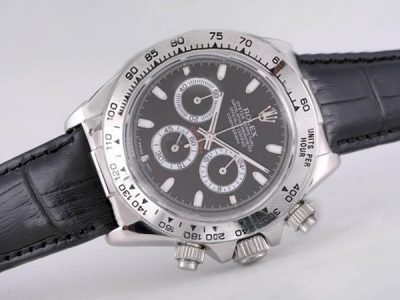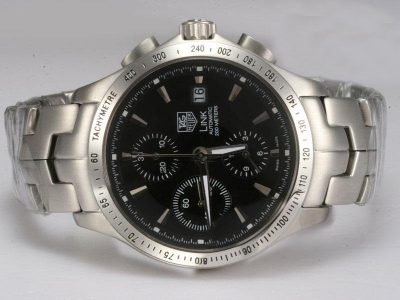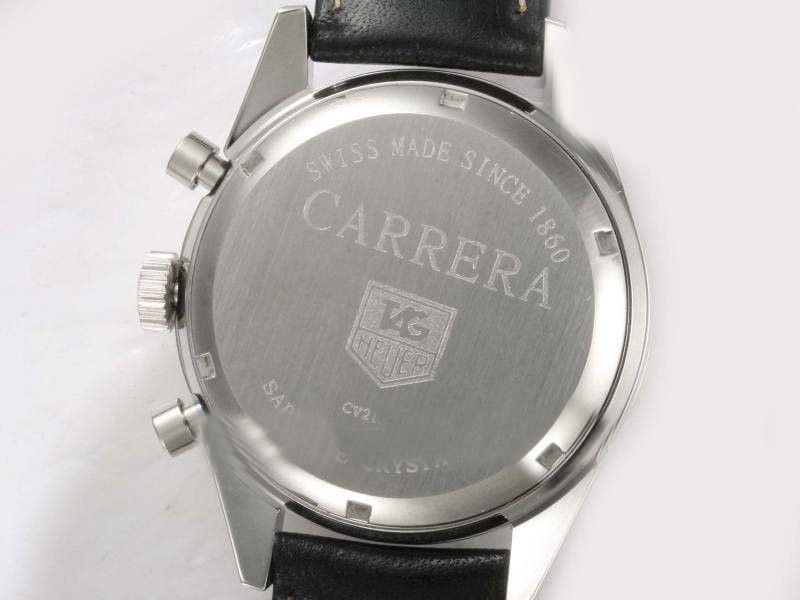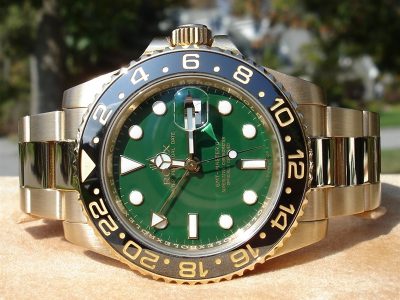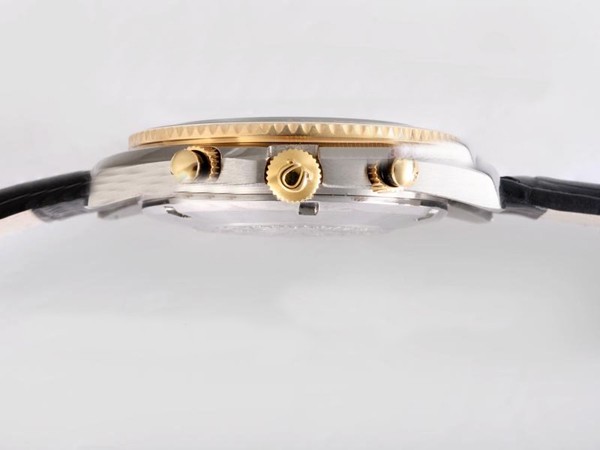CHIEF JUSTICE OF PAKISTAN IFTIKHAR MUHAMMAD CHAUDHRY
Versus
PRESIDENT OF PAKISTAN THROUGH SECRETARY AND OTEHRS
Per Khalil-ur-Rehman Remady, J-
Constitution of Pakistan(1973) Arts. 209, 211 & 184-
Needless to say that having heard the learned counsel for the parties at some length; having benefited immensely from the invaluable assistance rendered by them, and for detailed reasons to be recorded later about all the questions agitated before us, this Court, passed the following judgment on July 20, 2007 :-
"For detailed reasons to be recorded later, the following issues arising out of this petition are decided as under :-
(1) MAINTAINABILITY OF C.O.P NO. 21 OF 2007 FILED UNDER ARTICLE 184(3) OF THE CONSTITUTION
This petition is unanimously declared to be maintainable.
(II) VALIDITY OF THE DIRECTION (THE REFERENCE) ISSUED BY THE PRESIDENT UNDER ARTICLE 209(5) OF THE CONSTITUTION.
By a majority of10 to 3 (Faqir Muhammd Khokhar, J., . Javed Buttar, J and Saiyed Saeed Ashhad, J, dissenting), the said direction (the Reference) in question dated March 9, 2007, for separate reasons to be recorded by the Hon. Judges so desiring is set aside.
(III) VIRES OF JUDGES (COMPULSORY LEAVE) ORDER BEING PRESIDENT’S ORDER NO. 27 OF 1970 AND THE CONSEQUENT VALIITY OF THE ORDER DATED15-3-2007PASSED BY THE PRESIDENT DIRECTING THAT THE CJP SHALL BE ON LEAVE
The said president’s order No. 27 of 1970 is unanimously declared as ultra vires of the Constitution ad consequently the said order of the President dated 15-3-2007 is also, unanimously declared to have been passed without lawful authority.
(IV VALIDITY OF THE ORDER OF THE PRESIDENT DATRED9-3-2007AND OF THE ORDER OF THE SAME DATE OF THE SUPREME JUDICIAL COUNCIL RESTRAINING THE CJP FROM ACTING AS A JUDGE OF THE SUPREME COURT AND/OR CHIEF JUSTICE OF PAKISTAN
Both these orders are, unanimously, set aside as being illegal. However, since according to the minority view on the question of the validity of the direction (the Reference) in question, the said Reference had been competently filed by the President, therefore, this Court could pass a restraining order under Article 184(3) read with Article 187 of the Constitution.
(V) VALIDITY OF THE APPOINTMENT OF THE HON’BLE ACTING CHEF JUSTICE OFPAKISTANIN VIEW OF THE ANNULMENT OF THE TWO RESTRAINING ORDERS AND THE COMPULSORY LEAVE ORDER IN RESPECT OF THE CJP
The appointments in question of the Hon’ble Acting Chief Justice of Pakistan vide notification dated9-3-2007and the notification dated22-3-2007are, unanimously, declared to have been made without lawful authority. However, this invalidity shall not affect the ordinary working of the Supreme Court or the discharge of any other Constitutional and/or legal obligations by the Hon’ble Acting Chief Justice of Pakistan during the period in question and this declaration is so made by applying the defacto doctrine.
(VI) ACCOUNTABILITY OF THE HON’BLE CHIEF JUSTIE OFPAKISTAN
It has never been anybody’s case before us that the Chief Justice of Pakistan was not accountable. The same issue, therefore, does not require any adjudication.
All other legal and Constitutional issues raised before us shall be answered in due course through the detailed judgment/judgments to follow.
ORDER OF THE COURT
By majority of 10 to 3 (Faqir Muhammad Khokhar, J., M. Javed Buttar, J, and Saiyed Saeed Ashhad, J, dissenting), this Constitution Original Petition NO. 21 of 2007 filed by Mr. Justice Iftikhar Muhammad Chaudhry, the Chief Justice of Pakistan, is allowed as a result whereof the above-mentioned direction (the Reference) of the President dated March 9, 2007is set aside. As a further consequence thereof, the petitioner CJP shall be deemed to be holding the said office and shall always be deemed to have been so holding the same.
The other connected petitions shall be listed before the appropriate benches, in due course, for their disposal in accordance with law.”
For this petition to be competent, what would, therefore be required to be shown would be that it disclosed a breach of a Fundamental Right; sought repair of the said breach and the consequent enforcement of the said right and further and more importantly that the matter was not one which related only to an individual’s private grievance but was one of public importance. We would, therefore, have to find out whether the petition in hand met the said standards.
The petitioner before us is the holder of one of the top five constitutional offices in the country and alleges his illegal confinement in the President’s Camp Office for about five hours; complains of his subsequent detention, along with his wife and children, for about four days and having been so kept, in-communicado; claims a gross violation not only of the privacy of his home at the hands of some unscrupulous aliens but also of a grave and unspeakable offence to his dignity and asserts also that all this had been done to him to manoeuvre his illegal removal from his office in gross violation of the Constitutional guarantees. Further alleges that his trial by a not legally composed forum comprising also of some members who had a serious bias against him and then the forum proceeding against him in a manner which could not be said to be fair transparent, just and lawful, was offensive of the protection which the Constitution had guaranteed to him.
These grievances, the details of which have been noticed in the earlier part of this judgment, might at the initial glance appear only to be individualistic in nature and personal to the petitioner. But then, he is the Chief Justice of Pakistan; the head of the national judicature and thus a symbol of justice and of the independence of the country’s judiciary. The allegedly contemptible exercise in question not having been directed only against the person for the petitioner but being allegedly a device to remove the Chief Justice of Pakistan from his office in a manner not permitted by the Constitution, demonstrated that the matter in question was no longer a mere private affair of an individual by the name of Iftikhar Muhammad Chaudhry but wad much more.
The questions which would, therefore, emerge for determination, amongst other, would be as to what were the powers available with the executive qua the judiciary; whether a power could be conceded to executive to suspend a Judge of a Superior Court of to restrain him from performing the judicial or even administrative obligations cast on him by the Constitution; could the President send such a Judge, leave alone the Chief Justice of the country, on forced leave; was the President’s Order No. 27 of 1970 not offensive of the Constitutional security guaranteed to the Judges of the Superior Courts and thus ultra vires of the Constitution; was the Supreme Judicial Council a forum competent to try the Chief Justice of Pakistan ; was free access to justice and a trial by a valid, independent and an un-biased forum in a fair and a transparent manner not a fundamental right guaranteed to the people; was the manner in which the head of the national judiciary was sought to be removed from office, a proper, a lawful and a bona fide act on the part of the executive or was it not an act rooted in malice and for a collateral purposes; was the whole exercise in question not an offensive encroachment upon the Constitutional pledge about the independence of judiciary thus offending against the right of the people to ask for a judiciary which could guarantee quality justice for all.
The critical indispensability of dispensation of justice in a society, be it between men and men or between the governor and the governed, could never be over-emphasized. The fact that it is justice and justice alone which cold ensure peace in a society and its consequent strength, security and solidarity, was one of the serious lessons taught to the civilization by its history. And history, be it ancient, biblical, medieval or contemporary also tells us that societies sans justice had never bee permitted to pollute this planet for very long and had either to reform themselves paying heavy costs usually in blood or had else been wiped off the face of this earth. The French, the Russian, the Chinese and more recently, the Iranian revolution are some such lessons. It is perhaps for this very reason that doing of justice is conceivably the most repeated Quranic Command after ‘SALAAT’ and ‘ZAKKAT’. And it is also for the same cause that ‘Right of Access to Justice’ which is inconceivable in the absence of an independent and impartial judiciary, was by now a well-established and a universally accepted human right an would be evident, inter alia, from Article 10 of the Universal Declaration of Human Rights and from Article 14 of the United Nations Convention on Criminal and Political Rights and which right was now being secured by the people in different State by making requisite provisions in their respective Constitutions.
The passionate desire and the consequent determination of the people of Pakistan to establish an independent judiciary to ensure justice and the resultant security, peace and prosperity for themselves, is manifested through the Objectives Resolution which is now a substantive part of our Constitution being Article 2-A thereof and Articles 4, 9, 14, 25, 175, 179 and some others stand incorporated in our Constitution towards the attainment of the same declared and sacred objective.
The above-mentioned Article 9 of the Constitution guarantees protection of one’s life. All the judges and jurists in different ages and from different jurisdictions have been one in saying that the word ‘LIFE’ protected and assured by a various constitutions could never be understood to have been used in a limited or a restricted sense and therefore, did not mean jut the vegetative and the animal life of a man or his mere existence from conception to death. This word had, in fact, to be understood in its widest and fullest context to include all such rights, amenities and facilities which were necessary and essential for the enjoyment of a free, proper, comfortable, clean and peaceful life. When confronted with concrete situations, it was held through various judgments from various countries that the right to live meant the right to live with dignity and honour and included rights such as the right to proper health-care, the right to proper food and nutrition, the right to proper clothing, the right to education, the right to shelter, the right to earn one’s livelihood and even a right to a clean atmosphere and an un-polluted environment. And in some other cases, the nuisance created by municipal sewage, industrial affluents and the hazards caused by a magnetic field produced by high tension electricity wires, were found to be an interference with the enjoyment of one’s right to life. In yet another case from Indian jurisdiction, even access to proper roads for people living in hilly areas was held to be an essential part of the right to life. In more than one cases from our own jurisdiction, it was also declared that since right to live in peace in a just and a fair environment was inherent in the right to life, therefore, the right of access to justice was a well recognized and an inviolable Fundamental Right enshrined in Article 9 of the Constitution and its denial, an infringement of the said right. As a necessary consequence, it was further held that since access to justice was inconceivable and would be a mere farce and mirage in the absence of an independent judiciary guaranteeing impartial, fair and a just adjudicatory mechanism, therefore, the demand for a judiciary which was free of executive influence and pressures; was not manipulatable and which was not a subservient judiciary, was also an integral part and an indispensable ingredient of the said Fundamental Right of access to justice.
While endorsing these views, let me also add that the courts set up by the Constitution or under its authority have been so established not just as a means of securing bread and butter for the members of the bench or of the Bar but to provide justice to the people and the resultant peace in the society and it is thus they, who are the actual stake-holders and for whose benefit and welfare, the judicial system stands created. The judiciary was, therefore, an affair of the public; any offence to its independence would be an encroachment on the right of the people to access justice and finally that the security of service and of the tenure of the Judges was critical for the said independence.
I would, therefore, conclude and hold that access to justice was a Fundamental Right which the Constitution had guaranteed to the people; that the existence of an independent and vibrant judiciary was indispensable and crucial for the enjoyment of the said constitutional assurance and in the absence thereof, this right would be a mere illusion; that without security to the Judges of the Superior Courts vis-à-vis, inter alia, their service and the tenure thereof, the independence of judiciary would be a mere delusion and a chimera; that an allegedly illegal and un-constitutional interference with the tenure of office of the Head of the national judiciary would not be just an injury personal to the Chief Justice of Pakistan but would, in fact, be a serious assault on the said assured Fundamental Right of the public at large and thus of public importance. The blood-soaked, unprecedented agitation by the national Bar and by the people of Pakistan which commenced immediately afterthe 9th of March, 2007and which, unfortunately, also witnessed the loss of at least sixty innocent human lives at different occasions in different cities of the country, leaves hardly any room for proof that the matter was one of public importance.
Consequently, it is declared that this petition and the twenty four connected petitions which had also been heard by us vis-à-vis their maintainability, satisfy all the conditions and requirements envisaged by Article 184(3) of the Constitution and are, therefore, competent. I may add another reason for the maintainability of such a petition in such like situation. It is not known that when disciplinary proceedings were taken even against a peon in the public service and even if such proceedings resulted in the most minor of all actions i.e. a censure, he had a right of appeal and in fact had remedies, upto this Court. But here is a public servant who is the Head of the national Judicature and who stands blessed with constitutional guarantees about his service, when he is removed from his office either for misconduct or on account of his mental or physical incapacity, he is left high and dry and without a door that he could knock at for seeking justice for a Mr. Justice. Providing a remedy to any one who had suffered a wrong was one of the basic norms of justice. Reference may be made to REGISTRAR, SUPREME COURT OF PAKISTAN, ISLAMABAD V. QAZI WALI MUHAMAMD (1997 SCMR 141) AND MUHAMMAD MUBEEN-US-SALAM AND OTHERS V. FEDERATION FO PAKISTAN THROUGH SECRETARY, MINISTRY OF DEFENCE AND OTHERS (PLD 2006 SC 602. Since the law does not provide any remedy to a Superior Court Judge who is removed from office, therefore, Article 184(3) of the Constitution was the only mode, in appropriate cases of extra-ordinary nature of the kind in hand, through which such a Judge could seek redress of his grievances.
With these facts and circumstances being available on record, when we juxtapose the two versions i.e. the claim of the CPP that after the President had left the meeting at about 12:30 p.m., he had been kept there in captivity till his denudation had been fully accomplished through installation of Mr. Justice Javed Iqbal as the Acting Chief Justice of Pakistan at 5-03 p.m. and the contrary assertion of the respondents that the CJP was sitting in the Army House of his own pleasure and free will enjoying and appreciating the ‘MATERIAL’ collected against him and had opted to leave the place after 5 p.m. only after he stood stripped of his office, the conclusion is inevitable that it was the CJP’s version which was more plausible and consequently believable and that the claim to the contrary was implausible and unbelievable and we hold accordingly.
The CJP’s claim about the treatment meted out to him, to his lady-wife and children; to the members of his personal staff and even to his domestic servants has been noticed, in some detail, in the opening parts of this judgment. It may, however, be recapitulated that it was the case of the CJP that before he left the Army House/the President’s Camp Office, he had been stripped of all vestiges of his office; that on his way home he had been intercepted by an Army official and a Superintendent of Police who had forced him not to go to the Supreme Court; that when he was nearing his house at about 5:45 p.m., he saw barricades and pickets erected on the road leading to his residence; that on reaching his house, he saw that the national and the emblem flag flying there had been pulled down and he was shocked, though not surprised, that battalions of policemen and men of the ‘AGENCIES’ were swarming inside and outside his house; that his lady-wife, his two young daughters and two young sons stood huddled into one bedroom while the rest of the house had been taken over by the said men; that all his telephone lines and television cables had been disconnected and the mobile telephones and other devices had been jammed; that his domestic servants were whisked away by some ‘AGENCY’ officials and were allowed to return home only after 2/3 days; that till March 13, his daughters were not allowed to go to their school and college; that his seven years old son who suffered from physical handicaps and required constant medical attention, was deprived of the said facilities and that on March 13, when he had decided to walk down to the Supreme Court building to appear before the S.J.C as his cars had been lifted away, he was man-handled by police officials who even caught him from his hair and tried to bundle him into a vehicle which he refused to board on account of his security and safety concerns . He had added that on getting exposed to the world outside on the said March 13, he came to know that some members his personal staff, including an Additional Registrar of the Supreme Court, namely. Hammad Raza who was on officer belonging to the District Management Group and was on deputation with the Supreme Court working also as a Personal Staff office of the CJP, had also been taken away by the men of the ‘AGENCIES’ ; detained at some un-known place; interrogated and pressurized to give evidence against the C.J.P. It may be mentioned here that this Hammad Raza who was the only child of his parents and was the father of three small children including a few months’ old son, was murdered in the early hours of the 14th of May, 2007 i.e. the day on which this Bench was to commence the hearing of this petition and according to his young widow, this was in fact a message for the Judges comprising this Bench.
Summarising the facts and circumstances leading to and attending the impugned exercise in question, it may be stated :-
(a) that it was the CJP who had been SUMMONED to the Army House/the President’sCampOfficefor the 9th of March meeting where the President met him (the CJP) in his Army uniform;
(b) that instead of the persons really concerned with the matter, like the Law Minister and the Attorney General etc., the ones present in the meeting were only the Chiefs of the Intelligence Agencies and General in uniform;
(c) that the CJP was asked to abdicate his office which he declined to do;
(d) that the impugned Reference was then hurriedly put in place asking the concerned officials in the Presidency, the P.M.’s Secretariat and the Law Ministry to remain available despite the said day being a Friday and thus a half working day and while all these matters were being organized and finalized, the CJP was kept in captivity and ‘IN COMMUNICADO” at the Army House/the President’s Camp Office till his ouster was accomplished through making him dysfunctional and appointing an Acting Chief Justice of Pakistan ;
(e) that some imperceptible hands then hastily engineered a meeting of the Supreme Judicial Council the same evening, even using some un-identifiable flying object to transport at least one Hon. Member thereof to ensure his participation in the said meeting;
(f) that the S.J.C. then passed a further order, without there being a request or a prayer for the purpose, and even without being empowered so to do and restrained the CJP from performing his functions as the CJP or even as a Judge;
(g) that to ensure that these designs were fully consummated, without any resistance, the CJP was put under house-arrest and was rendered IN COMMUNICADO; and
(h) that in the rush to achieve the given target, no heed at all was paid by the S.J.C to the objections raised by the CJP about the alleged bias of at least three out of the five Hon. Members of the S.J.C. and to his earnest and persistent demand that the proceedings of the S.J.C. be not held IN-CAMEA and that he be allowed an open and a public trial. [pp. 116, 119, 120, 121, 122, 189, 191, 201] A, B,C, D, F, G, H, I, J, SS, TT, UU
Constitution of Pakistan(1973) Arts. 209(5)(6), 210, 211 & 184-
This then brings me to the next question in the context of maintainability of this petition i.e. whether this Court would have the jurisdiction to deal with the matter in question despite the ouster clause contained in Article 211 of the Constitution. Although, what is relevant for the said purpose are only the provisions of clauses (5) and (6) of Article 209 and the provisions of the said Article 211 of the Constitution but for a better understanding of the issue, it would be appropriate to notice the entire scheme envisaged by the Constitution for the removal of a Superior Court Judge who, on account of some mental or physical disability, was no longer capable of discharging his said obligations or who had misconducted himself and was no longer a desirable person to adorn the said high office.
A perusal of the above-quoted provisions of Article 209 would reveal that clauses (1) to (4) thereof envisage the existence and the constitution of Supreme Judicial Council while the provisions of clauses (5) and (6) of the said Article 209 tell us of various steps of the exercise leading to the removal of a Superior Court Judge. I may add that as would appear from the said provisions, the action in question could now be initiated by both i.e. by the President as also by the Supreme Judicial Council itself. Since in the present case, the proceedings in question had commenced at the instance of the President, therefore, I would confine myself only to the said situation.
It thus transpires that the exercise in question prescribed by Article 209 of the Constitution consists of the above-noted eight stages or steps starting with the receipt of the relevant information by the President and ending, either with the dropping of the proceedings against the concerned Judge, or his removal by the President, as the case may be. Let us now revert to the provisions of the ouster clause i.e. Article 211 of the Constitution to find out the extent to which the Constitution seeks to protect the said exercise against judicial scrutiny. The said provisions have been quoted above but are being reproduced hereunder for ready reference:-
"211. Bar of Jurisdiction. - The PROCEEDINGS BEFORE the COUNCIL, its REPORT to the PRESIDENT and the REMOVAL OF A JUDGE under clause (6) of Article 209 SHALL NOT BE CALLED IN QUESTION in any COURT. (Emphasis and under-lining has been supplied).
It will thus be noticed that out of the above-mentioned eight steps in the exercise in question, what is sought to be protected are the following three matters only, namely :-
(i) proceedings before the Council;
(ii) report of the S.J.C to the President, as a result of the said proceedings; and finally,
(iii) the removal of the concerned Judge.
Meaning thereby that the Constitution makes no attempt at all to keep the remaining matters out of the purview of the Courts of law, namely :-
(i) receipt of information by the President, from any source, about the mental or physical disability of a Judge or about his being guilty of misconduct;
(ii) collection of material in support of the said information;
(iii) formation of opinion by the President about such a disability or misconduct of a Judge; and the consequent
(iv) direction (generally called a Reference) by the President to the Council to inquire into the matter.
The submission loses sight of the fact that the word ‘PROCEEDINGS’ does not stand alone or unqualified in the said provision but stands restricted and qualified by three other words i.e., ‘BEFORE THE COUNCIL’. What we, therefore, need to find out is not what is meant by the word ‘proceedings’ but the meaning of the expression “PROCEEDINGS BEFORE THE COUNCIL”.
According to the English language dictionaries, the word ‘PROCEEDINGS’ means the ‘ACTS’ the ‘ACTIONS’, the ‘DEEDS’, the ‘STEPS’ and the ‘HAPPENINGS’ while the word ‘BEFORE’ means ‘IN FRONT OF’ or ‘IN THE PRESENCE OF’ . And when translated into simpler language, easily comprehensible by all concerned, the expression, ‘THE PROCEEDINGS BEFORE THE COUNCIL’, would mean, the acts, the actions, the deeds, the steps and all the happenings taking place in front of or in the presence of the Council. Therefore, the said expression would cover only those matters which take place before or in front of the S.J.C. and no other. Meaning thereby that any event or business or any part of the exercise in question taking place elsewhere would not fall within the purview of the said expression e.g., receipt of relevant information by the President; collection of evidence relating thereto; formation of opinion by the President about making a Reference in the matter to the S.J.C. and the consequent direction to the said Council. Needless to add that the exercise envisaged by Article 209 is bi-foral i.e. certain things happening at the President’s end and other things taking place before the S.J.C. And if the framers of the Constitution had understood English language as the said learned ASC for the Federation is canvassing i.e. proceedings before the Council meaning “everything from the start to the end”, then the founding fathers would not have wasted words to mention also the report of the Council to the President and the removal of Judge by him, in the said Article 211. Every student of law is expected to know the principle which is too well established by now that no redundancy or surplusage could ever be attributed to a draftsman much less to the one drafting the Constitution. It may be clarified that the report of the Council to the President should not be confused as a matter happening before the said Council as the report required to be sent to the President was not something taking place before the S.J.C but only a result of whatever had transpired or had taken place before it. It may be added that if the intention of the Constitution was to grant immunity to all the acts and proceedings “from the start to the end”, then there was nothing stopping the Constitution makers from saying in Article 211 simply that no proceedings under Article 209 would be called in question in any court, which was not done and what had instead been done was grant of protection to some only of the proceedings envisaged by the said Article 209.
There is no cavil with the proposition that the word “PROCEEDINGS” is a comprehensive term and would ordinarily include every step towards the progress of a cause in a court or before a tribunal. But then we also need to remember that a narrow or a wider import could be given to the said word depending upon the nature and the scope of the enactment in which the same was used with particular reference to the language of the law in which it appeared. Reference may be made to GANGA NAICEEN VS. SUNDARAM AYYAS (AIR 1956 Madras 597). Reference may also be made to MUHAMMAD ISMAIL’S CASE (PLD 1969 SC 241) wherein it ha been declared by this Court that the purpose of construction or interpretation of statutory provisions was no doubt to ascertain the true intention of the Legislature, yet that intention had, of necessity, to be gathered from the words used by the Legislature, itself and that if the words were so clear and unmistakable that they could not be given any meaning other than that which they carried in their ordinary grammatical sense, then the said were the meanings to be attached to the said words. As has been mentioned above, the word “PROCEEDINGS” used in Article 211 of the Constitution did not stand unqualified in the said provision but stood restricted by express words i.e., ‘BEOFRE THE COUNCIL” and the said word, therefore, had to be given a restricted meaning in the context of the language used in the said provision.
Having thus determined the operational area of Article 211 of the Constitution and the extent to which the immunity granted by it extended, we revert back to the petition in hand and find that the acts impugned therethrough were two-fold i.e. the actions taken on the 9th of March at the President’s end including the making of the direction under clause (5) of Article 209 i.e. sending of the Reference to the S.J.C. and then some proceedings taken before the said Council. It has been declared above that, no immunity attaches to the happenings and the actions prior to the matter reaching the S.J.C. and the said actions were, therefore, subject to scrutiny by this Court like any other administrative act. However, the matter relating to the proceedings before the S.J.C. which also stood questioned before us, warrants further examination.
Essentially, because of the repeated military interventions, our Constitutional and Judicial history is brimful with ouster of jurisdiction clauses and the treatment metted out to the same by the Superior Courts. The issue has been so frequently raised and equally frequently examined that nothing new remains available to be said on the subject. It has been repeatedly and consistently declared by this Court that a mere incorporation of such a provision in the Constitution or in any other law for the matter, did not by itself preclude a court from entering the arena sought to be protected as the judicial power, being inherent in this Apex Court, it was not its privilege but in fact is obligation to examine such like ouster clauses and then to determine the extent of the claimed immunity. [p. 123, 125, 126, 127, 128, 129, 130] K, L, M,N,O,P,Q,S,T
